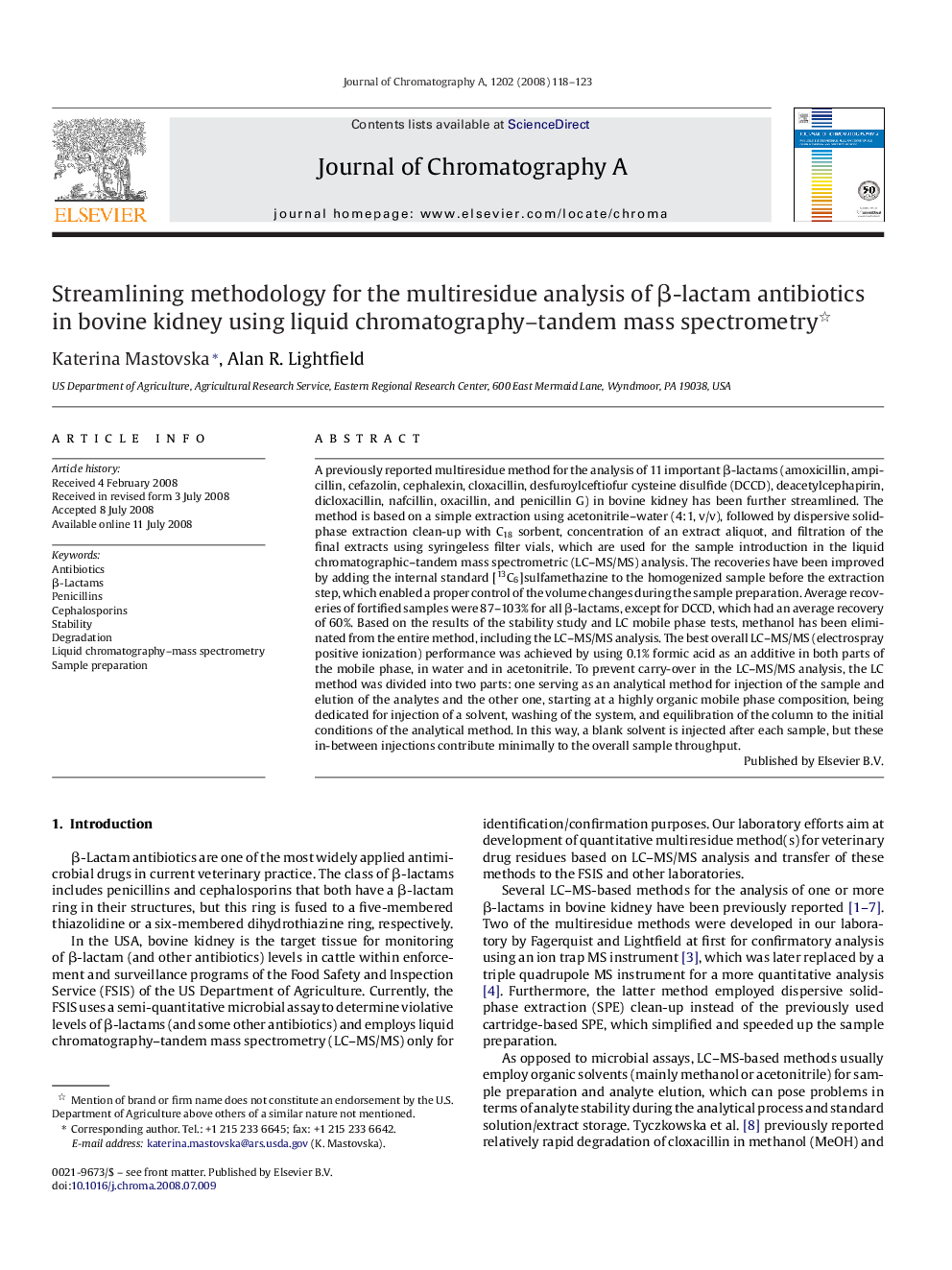| کد مقاله | کد نشریه | سال انتشار | مقاله انگلیسی | نسخه تمام متن |
|---|---|---|---|---|
| 1210848 | 965425 | 2008 | 6 صفحه PDF | دانلود رایگان |

A previously reported multiresidue method for the analysis of 11 important β-lactams (amoxicillin, ampicillin, cefazolin, cephalexin, cloxacillin, desfuroylceftiofur cysteine disulfide (DCCD), deacetylcephapirin, dicloxacillin, nafcillin, oxacillin, and penicillin G) in bovine kidney has been further streamlined. The method is based on a simple extraction using acetonitrile–water (4:1, v/v), followed by dispersive solid-phase extraction clean-up with C18 sorbent, concentration of an extract aliquot, and filtration of the final extracts using syringeless filter vials, which are used for the sample introduction in the liquid chromatographic–tandem mass spectrometric (LC–MS/MS) analysis. The recoveries have been improved by adding the internal standard [13C6]sulfamethazine to the homogenized sample before the extraction step, which enabled a proper control of the volume changes during the sample preparation. Average recoveries of fortified samples were 87–103% for all β-lactams, except for DCCD, which had an average recovery of 60%. Based on the results of the stability study and LC mobile phase tests, methanol has been eliminated from the entire method, including the LC–MS/MS analysis. The best overall LC–MS/MS (electrospray positive ionization) performance was achieved by using 0.1% formic acid as an additive in both parts of the mobile phase, in water and in acetonitrile. To prevent carry-over in the LC–MS/MS analysis, the LC method was divided into two parts: one serving as an analytical method for injection of the sample and elution of the analytes and the other one, starting at a highly organic mobile phase composition, being dedicated for injection of a solvent, washing of the system, and equilibration of the column to the initial conditions of the analytical method. In this way, a blank solvent is injected after each sample, but these in-between injections contribute minimally to the overall sample throughput.
Journal: Journal of Chromatography A - Volume 1202, Issue 2, 22 August 2008, Pages 118–123